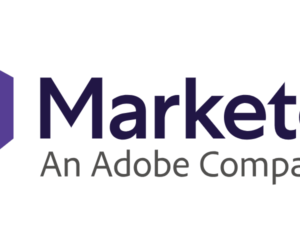Although 2020 is already well underway, business don’t necessarily have to wait for a new year to start looking into potential ways to grow their businesses. So it’s the perfect time to stop for a minute and take stock of the year that has just come to an end.
We finished 2019 in December, with an Afterwork session on Marketing Automation in Paris. While I was preparing it, I came to realize that choosing Marketo to manage our funnel had been a good thing.
It happened 3 years ago.
Since then there have been many ups and downs. And a lot of surprises on the way. Not to mention doubts.
But today I can officially declare that the hardest part is now behind us! After nearly 3 years of hard grind, Pentalog can say loud and clear: God bless Marketing Automation!
But none of it has been easy, starting with choosing a Marketing Automation tool. When I look back, there were 3 deciding factors in our decision-making process.

Although the transition was challenging to start, choosing Marketo for our business was the right decision. Here are 3 tips to help you choose right best Marketing Automation tool.
Choosing a Marketing Automation tool: the 3 key factors
Following the Marketing Automation route means investing LARGE sums. Investing in very expensive software, investing in specialists in that software and investing in training for your marketing and sales teams to make sure they fully adopt it.
Investing with the aim of achieving an ROI in the medium term that could otherwise never be attained by the marketing department of a multi-brand, multi-country, B2B/B2C business model with a complex portfolio of products/services.
3 years ago, our shortlist of specialist Marketing Automation software included two of the most well-known: Marketo and HubSpot.
On paper, these 2 software packages offered more or less the same functionalities. So how were we going to choose?
1) PRICE
The easiest, most rational approach would be to compare the cost of a Marketo or HubSpot license. This varies according to the volume of the data base.
Based on 200,000 contacts and basic modules that were almost identical in terms of functionalities, the annual cost differed slightly between the two companies: €54,000 for Marketo as against €50,220 for HubSpot.
More exciting functionalities like Web Personalization, Revenue Explorer and ABM aren’t included.
License price based on the number of contacts? Yes, you read it right.
Which is why it’s important to give your data base a good clear out before integrating a new Marketing Automation tool, so that you don’t end up paying for hosting rubbish contacts that won’t ever bring you any revenue.
Verdict?
Marketo: 0
HubSpot: 1
2) MARKETING CAMPAIGN MANAGEMENT
When you develop a marketing strategy, first you have to be really familiar with your contact data base, define the personae and identify their particular issues so as to deliver the right message at the right time via the right channel.
Then you have to write the content, manage the design of the newsletters, landing pages or white paper, post what you need to when you need to on social media, track KPIs, adjust your strategy, etc. All multiplied by 2, 3, 4 etc. if it’s multi-brand, multi-country…
Easy to say?
And all with the little loud voice coming from the management team office: “When are we doing the first landing page?” “But this scoring system doesn’t make sense!” “Are you sure it was the right decision?”, etc.
Yes, easy to say.
But pretty hard to do.
When we looked at it all in more detail, 3 years ago we understood that there was a fairly big difference between the 2 packages in terms of campaign management:
-
With Marketo, campaigns are managed separately per campaign and per brand, which makes it perfect if you like to appoint a Product Owner for each campaign.
-
As for HubSpot, all it offers is to manage things per channel, making it multi-campaign, which isn’t very helpful if you want an overview of your campaign.
Verdict?
Marketo: 1
HubSpot: 0
3) COMPANY SIZE AND BUSINESS MODEL
To choose the best tool for your company, it’s important you take its DNA, products/services and growth objectives into account.
Pentalog, which combines a number of brands (SkillValue, Pentalog Software Factory, Pentalog Growth Factory, Pentalog Innovation Factory and Pentalabbs), is present on 3 continents and offers custom technical and digital solutions to a B2B and B2C target audience. This was a complex equation for our marketing team to solve, as they would need to increase their efficiency tenfold if they were going to cover the whole offering on behalf of the group and the companies it works with.
With so many different parameters to address, we needed a highly flexible tool that would meet the needs of all our various different entities.
That’s when the real deciding factor came into play: once we bought a Marketo license, no distinction would be made between the group’s different brands. But with HubSpot it was the other way round – we’d have had to buy a separate license for each brand.
Verdict?
Marketo: 1
HubSpot: 0
Game set and match to Marketo!
That being said, I think that for startups and single product, single country companies, HubSpot would definitely be the most suitable solution. With HubSpot you quickly become more independent and you have more freedom in terms of campaign design, whereas with Marketo a more rigorous approach is needed and there is a lengthier learning period.
Once the learning curve has flattened out, however, investment is in direct proportion to the level of sophistication offered by Marketo in terms of campaign deployment.
For Pentalog, therefore, Marketo was the obvious choice.
But choosing the right Marketing Automation tool isn’t enough.
And just pressing the ON button isn’t enough either, if you want to conduct an effective campaign.
You have to adjust to the tool. You also have to make it your own, by selecting the functionalities that will best help your business to achieve its objectives. Nevertheless, people remain the central factor in terms of campaign design and management.
When you first start using Marketing Automation, you encounter far more obstacles than you expect. The company has to be mature enough to adapt to change quickly and effectively, if wants to see a rapid ROI.
Can you see where I’m going with this?
Yes. Agility. Without agility, your teams are totally in the dark and that isn’t good for either staff morale or your KPIs.
But that’s such a vast topic it’s going to need an article all to itself!
What about you – which Marketing Automation tool did you go for, and why?
I would love to discuss this further with you. Please feel free to book a spot in my agenda for a 15 min call.
Read more about Marketing Automation:










